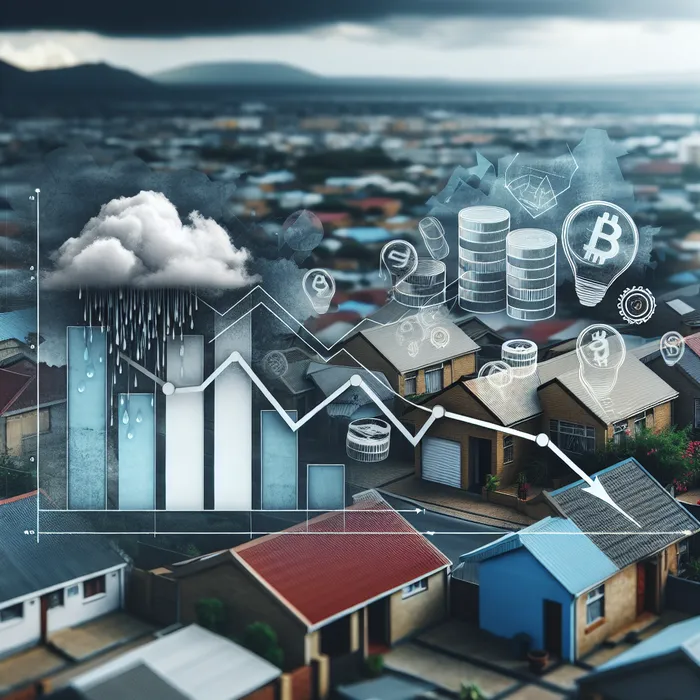South African households see slight income improvement, but challenges remain
Affordability Index

Despite a slight improvement in household incomes in South Africa, challenges persist as disposable income continues to decline, driven by interest rate hikes and economic uncertainties. Picture: Ron AI
Image: Supplied
The financial position of South African households improved slightly in the fourth quarter, but real disposable income per person for 2024 continued its decline from 2022, when the interest rate raising cycle increased.
This was according to economist Dr Roelf Botha, who commented on the release on Tuesday of the Altron FinTech Household Resilience Index (AFHRI) for the fourth quarter of 2024.
He attributed the modest improvement to three 25 basis point cuts in the repo rate between September 2024 and January 2025, which lowered the prime overdraft rate to 11% from a record high of 11.75%. Consumers also benefited from year-end bonuses, two-pot pension payouts, and temporary jobs in the holiday period, particularly in the tourism and retail sectors.
“The data clearly shows that while we’re seeing some recovery, households remain under significant financial strain following this period of high interest rates. The marginal interest-rate cuts provided some small relief, but more substantial monetary policy easing is required to meaningfully improve household financial resilience, especially in the face of the diminished global growth figures anticipated this year," said Altron FinTech MD Johan Gellatly.
Dr Botha said households are not out of the woods yet. At the latest meeting of the Monetary Policy Committee (MPC) of the Reserve Bank, the rate-cutting cycle was halted, which would prevent the debt cost burden of households from dropping to a level that would encourage a more permanent recovery of household expenditure – the key driver of aggregate demand in the economy.
The AFHRI’s four-quarter average, which eliminates seasonality, had started to recover but has barely remained above the level recorded at the end of 2021, when the MPC started its relentless cycle of interest rate increases, despite lacklustre GDP growth and an obvious absence of excess demand in the economy, said Dr Botha.
The ratio of household debt costs to disposable incomes declined from 9.1% to 8.9%, but this also remained significantly higher than the 6.8% level in 2021.
“The cost of credit (and of capital formation) in the South African economy remains 31% higher than four years ago – one of the main reasons for the lethargic economic growth rate that moved in tandem with each increase in the repo rate,” said Botha.
“The decision by the MPC at its March policy meeting not to lower the repo rate further is regrettable, as several key economic indicators continue to show weakness, with business confidence having retracted since the beginning of the year,” he said.
The S&P Global Purchasing Managers’ Index for South Africa fell to 47.4 in January 2025, down from 49.9 in December, marking the sharpest contraction in the private sector since July 2021.
It recovered to 48.3 in March 2025, but has now been in contraction territory – below 50 – for four successive months, with the main reason being weak demand that has driven further declines in output and new orders.
He said of concern was the steep decline in the values of building plans passed and buildings completed in the metros and larger municipalities, a trend that had significantly worsened in January and February.
“Any significant decline in construction activity will exert a negative impact on the AFHRI, due to the twin effects related to the large weighting of employment in the AFHRI and the fact that the construction sector is the most labour-intensive sector in the economy,” said Dr Botha.
“If only the leaders of the GNU had come out of the VAT dispute with smiles and faced us together, saying we have resolved the dispute and now we are moving forward together, it just would have added so much more certainty in the economy,” Dr Botha said.
He said it was perplexing that the MPC recently claimed credit for a lower inflation rate when, in fact, the decline in the consumer price index was due to a steep decline in the producer price index (PPI) caused by a normalisation of oil prices and global freight shipping charges. The Covid pandemic and Russia’s invasion of Ukraine saw these prices increase five-fold and eight-fold, respectively, over less than eight quarters, which hadled to an unheard-of escalation in global price indices.
At the end of April 2025, the Brent crude oil rice had fallen 44% from the end of June 2022, which was a key reason for the decline in South Africa’s PPI to its current level of barely above zero – raising questions over the MPC’s refusal to lower interest rates more aggressively, said Dr Botha.
BUSINESS REPORT